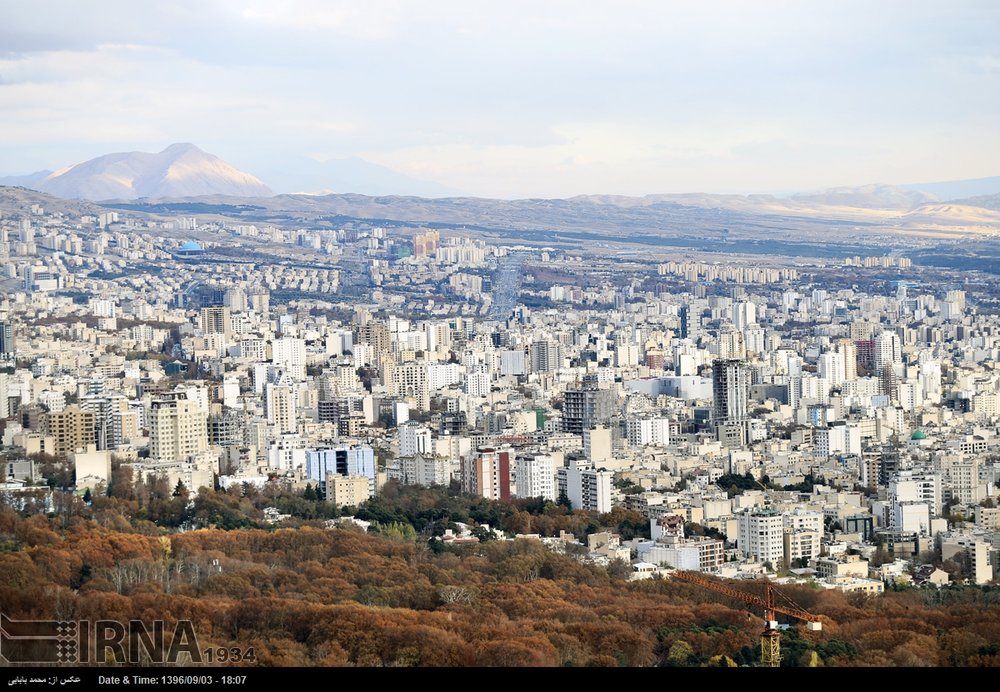No painless solution to air pollution

In a press conference held in Tehran’s Pardisan Park on Saturday, environment officials commented on the newly enacted clean air law and unveiled the slogan for this year’s national clean air day: “Clean Air Law, the Law of Breath.”
Twenty two years have passed since the first ‘national clean air day’ was observed on January 19, 1996, said Masoud Zandi, the caretaker of center for air quality and climate change affiliated to the Department of Environment.
He went on to say that the growing trend of air pollution in metropolitan cities during the past 15 years urged officials to introduce new laws and measures once in a while, however, laws didn’t have the expected effect.
Salient features of clean air law
Comprising 34 articles, the law on clean air was adopted by Majlis [the Iranian parliament] in July 2017 after 6 years of continuous revisions, Zandi highlighted.
It has some salient features, he noted, listing them as having unambiguous and precise definitions, determining the exact responsibilities of every organization and filling the gaps of previous regulations.
There are polluting industrial units and sand mines operating in Tehran province which aggravate the situation. And it seems that green tax paid by industries is not specifically allocated to combating air pollution. Surely, there is no painless solution for this conundrum, but whatever the pain, it won’t be acuter than the loss of life of our fellow citizens.
Increased fines
Punishments and fines defined by previous regulations were not effective and deterrent, said Zandi, adding, new fines are heavy enough to reduce related violations.
For instance, polluting industrial units will face huge fines and if they are not able to limit their pollution, they may even be transferred to other regions, he concluded.
The status of PM2.5 fine particles in Tehran
Masoud Tajrishi, DOE's deputy director for human environment affairs, said that incomplete combustion and low quality fuels are the main reasons behind the high level of PM2.5 fine particles in Tehran.
Causing serious health effects, PM2.5 particles are small enough to be breathed deep into the lungs, highlighted Tajrishi, adding, this is the main factor which forces officials to temporary close schools on highly polluted days.
Recognizing vehicles as the main producers of PM2.5 particles in Tehran, he added that personal cars, motorcycles and diesel-engine trucks and buses have respectively 3, 12 and 85 percent share of fine particles production.
Tehran trucks running on diesel engine are temporarily banned from the streets, which dramatically reduced PM2.5 fine particles in the capital, he said, emphasizing that these vehicles play a key role in air pollution.
Clunkers plying in Tehran
Based on statistics, 97 percent of buses and 34 percent of trucks in Tehran are outdated, Tajrishi said, adding that there are totally about 8,000 buses and some 30,000 trucks moving in Tehran.
He referred to the renovation of public transport buses as the “Achilles heel” of all previous programs which were trying to fight air pollution and pointed to the talks which are being conducted with some Italian, Chinese and South Korean bus manufacturers to provide new buses and accelerate the renovation process. The process is time-consuming since the production capacity is relatively low, he noted.
Low quality fuels
Pointing out the prominent role of fuels in air pollution, he argued that new trucks and buses fueled by low standard diesel would also create pollution.
Tajrishi who is a university professor maintained that the domestic production capacity of euro 4 diesel just satisfies half of the country’s need and the other half receives euro 2 diesel. Attempts have been made to provide metropolitan areas with euro 4 diesel but not proved entirely successful, he added.
Altering school calendar
Tajrishi described the proposed idea of one-month break for schools in late autumn and early winter for cold cities as “certainly a sedative”, emphasizing that it is not a permanent solution for air pollution.
Tehran’s new traffic scheme
If approved by Tehran City Council, the new traffic scheme will divide the metropolitan into three zones of A to C. All citizens who wish to enter all traffic zones with their personal car will be charged accordingly, with zone A being the costliest.
The civil engineering professor characterized the new traffic scheme as “technically fair,” stressing that charges should be high enough to deter people from using personal cars.
The new traffic scheme is aimed to limit PM2.5 fine particles, he highlighted, adding, “If this aim is not fulfilled, the Department of Environment will abolish the scheme right away.”
We can make a simple deduction here. According to analyses that Tajrishi mentioned, just 3 percent of PM2.5 particles in Tehran are produced by personal cars, and on the other hand, the traffic scheme is specifically planned for personal cars; so we just raise the cost of using personal cars for- the best scenario- 3 percent reduction of fine particles? Irrational. We can either raise doubt over the accuracy of analyses or environmentally-oriented purpose of new traffic scheme as Tehran Municipality claims.
Tehran's air pollution; a conundrum
The decade long challenge of air pollution in Tehran can be attributed to many causes.
First of all, there are vehicles. Considerable number of inefficient clunker buses, trucks and cars ply in Tehran and the car scrapping process is two slow compared to the vehicles import and production rate. Also, the impact of substandard domestically produced cars, which is an inevitable result of lack of competition, on the air pollution cannot be neglected.
Then, public transportation fleet doesn't meet the expectations of citizens both in terms of capacity and comfort.
There are polluting industrial units and sand mines operating in Tehran province which aggravate the situation. And it seems that green tax paid by industries is not specifically allocated to combating air pollution.
Surely, there is no painless solution for this conundrum, but whatever the pain, it won’t be acuter than the loss of life of our fellow citizens.
MAH/MQ/MG
Leave a Comment